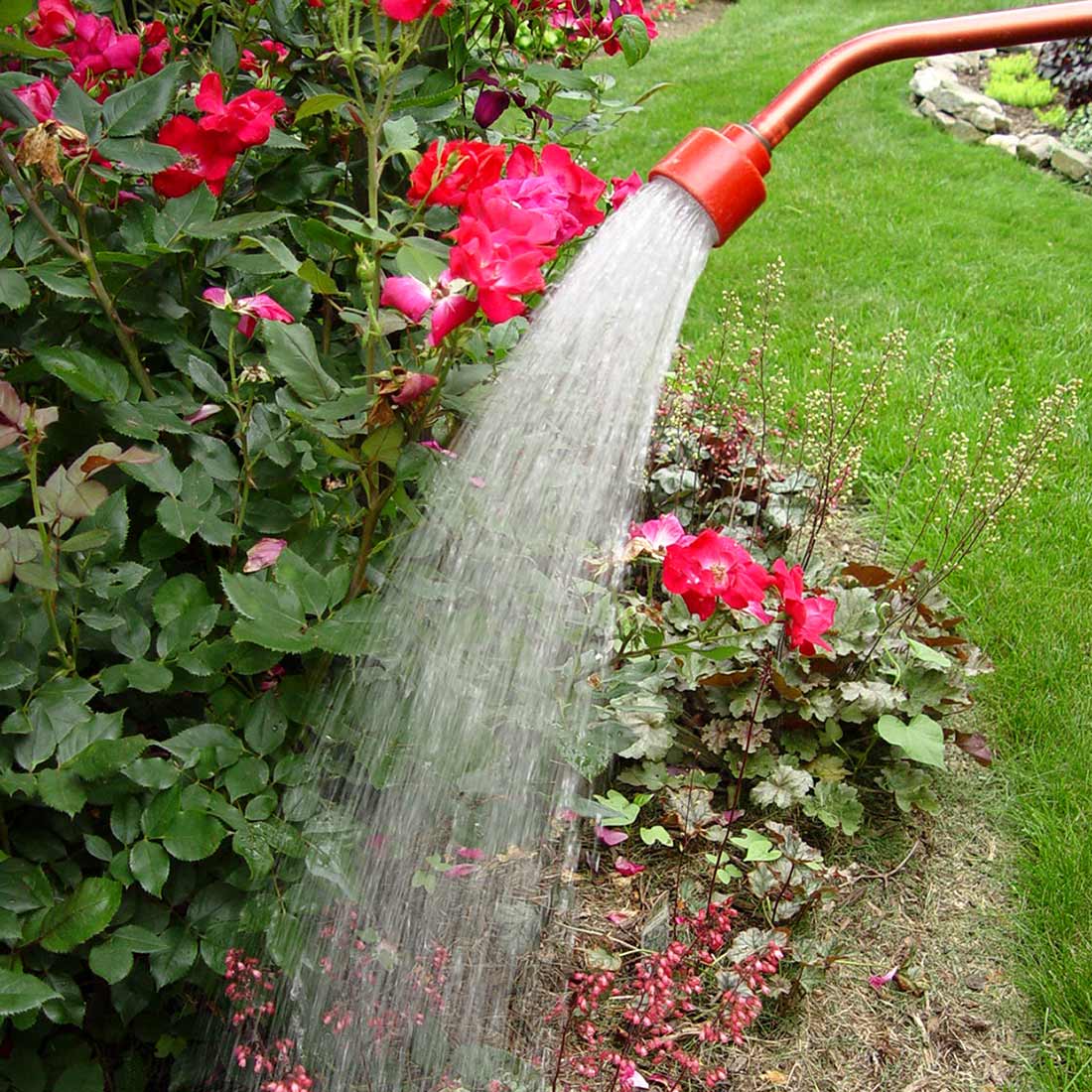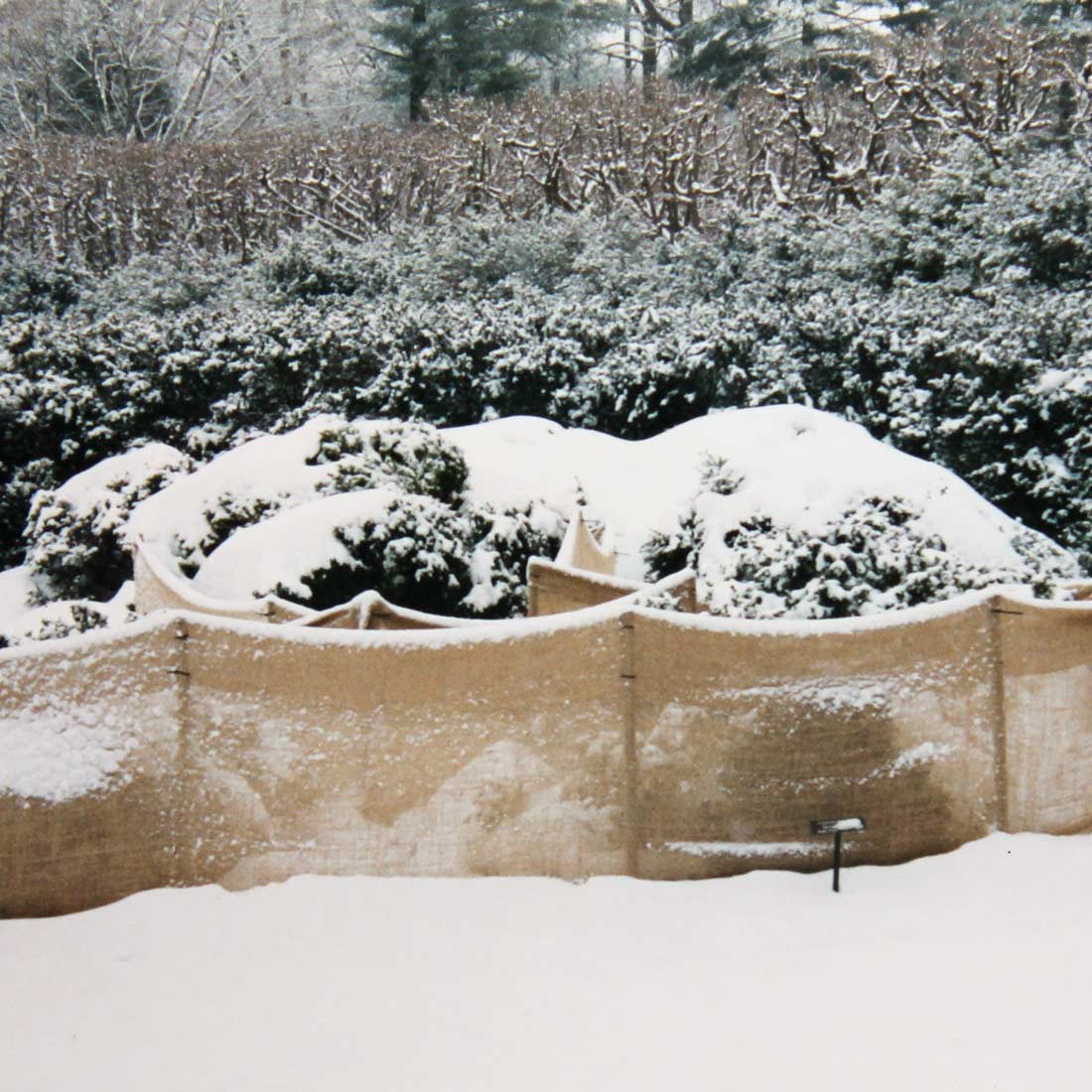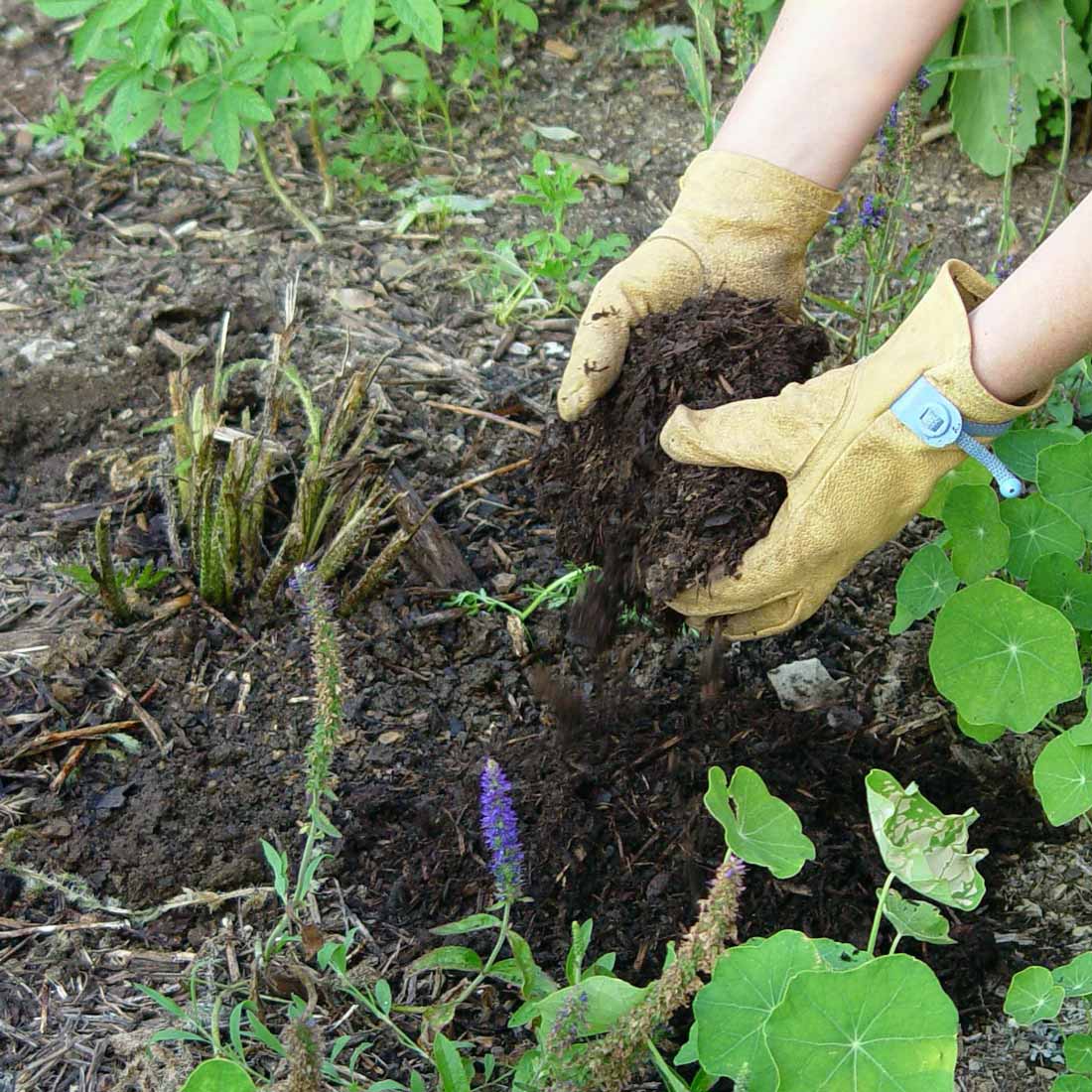Water Plants Well in Fall to Prepare Them for Winter
At the end of summer, we give little thought to keeping the plants watered, but hydrating trees, shrubs and perennialss in fall will help them survive winter and flourish next spring.
Cold temperatures and the drying winds of winter can take a toll on plants, especially young ones and those that are borderline-hardy in a particular climate.
Gardeners can’t change the weather, but they can minimize winter plant damage with three key precautions in fall.

Don’t let plants go into winter with dry soil. George Weigel
Don’t be too quick to put the hose away. In dry autumns, plants can go into winter already in a moisture deficit.
That’s a particular problem for broadleaf evergreens such as hollies, euonymus, boxwoods, aucuba, laurels, and osmanthus, which continue to lose moisture all winter through their foliage. When the soil freezes in winter, those plants can’t take up moisture to replace what’s being lost, leading to leaves that brown or “winter-burn” around the margins.
In bad enough deficits, broadleaf evergreens and young, poorly rooted plants can lose all of their leaves or dry out enough that they die.
If rain doesn’t do the deed in fall, keep the ground around these burn-susceptible plants damp right up until the ground freezes.
An occasional soaking in winter is even helpful if the weather is dry and the ground isn’t frozen or snow-covered.

Burlap barriers like these can mitigate the damage from cold, drying winter winds. George Weigel
Another helpful move is protecting tender, borderline-hardy, and/or wind-vulnerable plants with burlap shields.
Hammer stakes in the ground a few inches out from the wind-blown side of the plants, then staple burlap (or similar fabric) to them. This creates wind barriers as opposed to wrapping the plants with fabric, which denies light and can trap disease-promoting moisture on the foliage.
Stuffing the burlap protector with leaves or straw also buys a few extra degrees of protection to the buds of cold-sensitive deciduous (leaf-dropping) plants, such as bigleaf hydrangeas, crape myrtles, and figs.
Remove the barriers in spring.
Another product that some people use to head off winter-burn is an anti-transpirant/anti-desiccant spray. These resin-based sprays, applied two or three times over winter, are intended to slow moisture loss by coating the microscopic openings in plant leaves.
Research has been mixed on how well they work for cold and wind-burn protection, however.
In cases where foundation shrubs are likely targets of snow and ice sliding off roofs, small wooden-roofed structures can be erected over the top of the plants.
In areas where deer roam, fence barriers can be erected around susceptible plants to prevent both browsing (usually more prevalent in winter) and rubbing damage from bucks.
Fence or hardware-cloth wraps around the base of trees and shrubs can head off winter gnawing damage by rodents.
In the case of borderline-hardy shrubs and evergreens growing in pots, you have two winter-burn-protection options.
One is to move the potted plant to a protected spot over winter and water it whenever temperatures are above freezing and the soil is dry. Possibilities include a sun porch, an unheated garage that gets light over winter, and along a south- or east-facing house wall.

A two- to three-inch layer of mulch helps insulate the soil in winter. George Weigel
A third winter plant-aiding strategy is covering the soil in landscape beds with two to three inches of mulch.
Mulch helps keep moisture in the soil, keeps the soil warmer longer, and prevents the see-saw freezing and thawing that can be more harmful to young plants than a once-and-done solid freeze. (Reason: Freezing and thawing can force poorly rooted plants up above the soil surface where the winter wind can freeze-dry the exposed roots.)
Wood chips, shredded hardwood, bark mulch, and pine needles are all good mulches. So are all of those leaves that drop from trees in fall. They’re nature’s plant insulation.
If you don’t already have mulch in place, it can be added or topped off in fall. Just avoid packing mulch onto the base of trees, where it can rot the bark and give protection to bark-gnawing rodents.